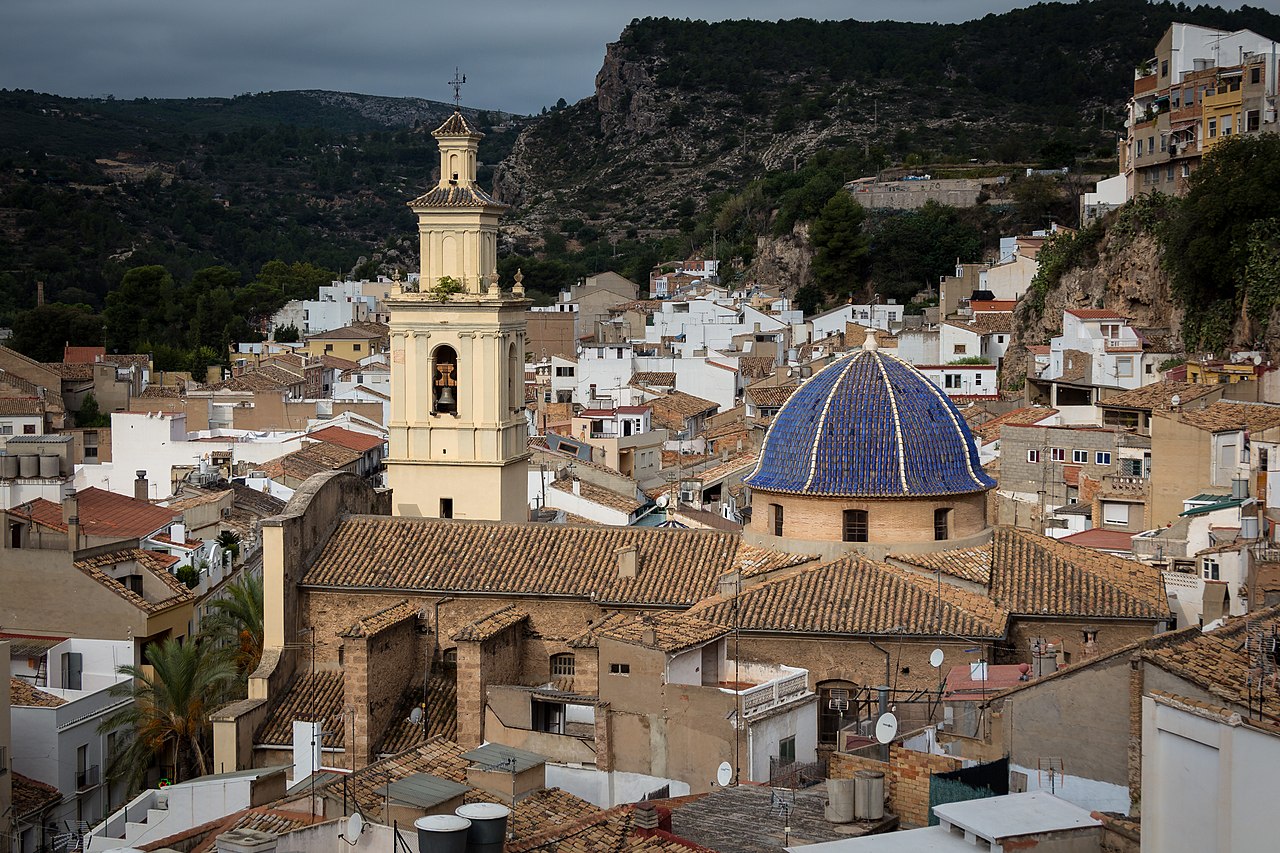
Do you want to discover what to see in Bunol? We will tell you that this town in the province of Valencia It has a long history dating back to Muslim times. However, the area has been populated since Paleolithic times and the name of the town seems to be Roman.
As a result, it offers you a extensive and interesting monumental heritage. But it is also surrounded by a wonderful natural environment. It is located in the Hoya de Buñol region, of which it is the capital. In this one you have saws like that of Malacara, that of Chiva or that of Martés which are covered by Aleppo pine forests and which offer you beautiful hiking trails. But, without further ado, we are going to show you what to see in Buñol.
The castle of Bunol
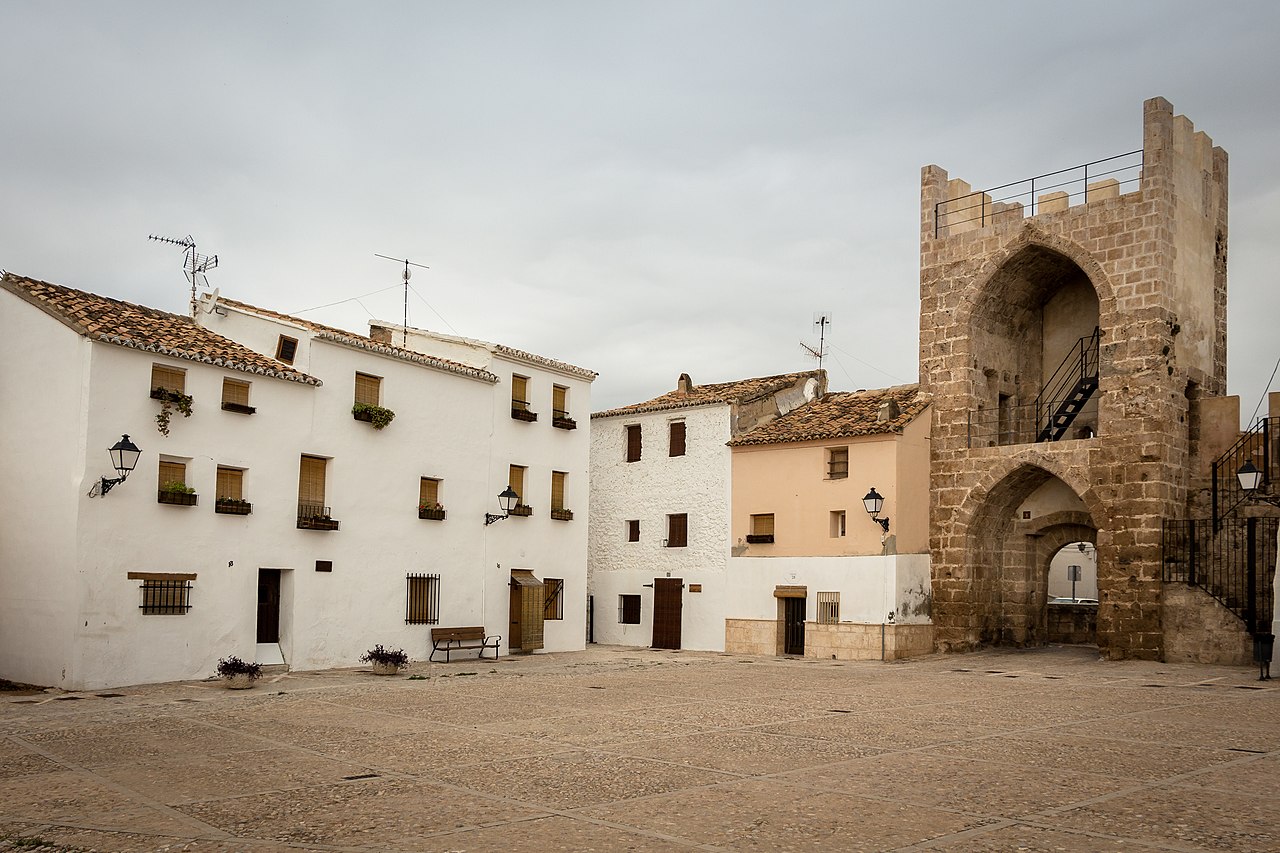
Interior of the castle of Buñol, with its current houses
Probably the great symbol of this Levantine town is its castle, one of the best preserved in the Valencian Community. It was built between the XNUMXth and XNUMXth centuries, although it was reformed in the XNUMXth. It consists of two parts joined by a bridge that crosses the artificial moat.
The upper includes the central tower and Main Square in which, curiously, there are still houses. As for the lower one, it offers you even more monuments. In this you have the Major Tower, the old one church of the savior, gothic palace, another renaissance and two museums. Its about Archaeological and the Ethnographic.
A room of the Gothic palace remains, the so-called “del Oscurico”. In the XNUMXth century it was expanded with another Renaissance-style building. Is he merchant's palace and it houses, precisely, the archaeological museum that we have just mentioned and the tourist office. For her part, the church of the savior It belongs to the XNUMXth century reform and consists of a single nave covered by a barrel vault. It is also the headquarters of the aforementioned ethnological museum.
Finally, if you leave the complex through the south tower, you will access the Castle neighborhood, of Muslim origin and full of charm. It is a pleasure to walk through its narrow medieval streets that end in small squares with whitewashed walls. It is such a beautiful place that it has served as a model for great painters such as Joaquín Sorolla.
Church of San Pedro Apóstol
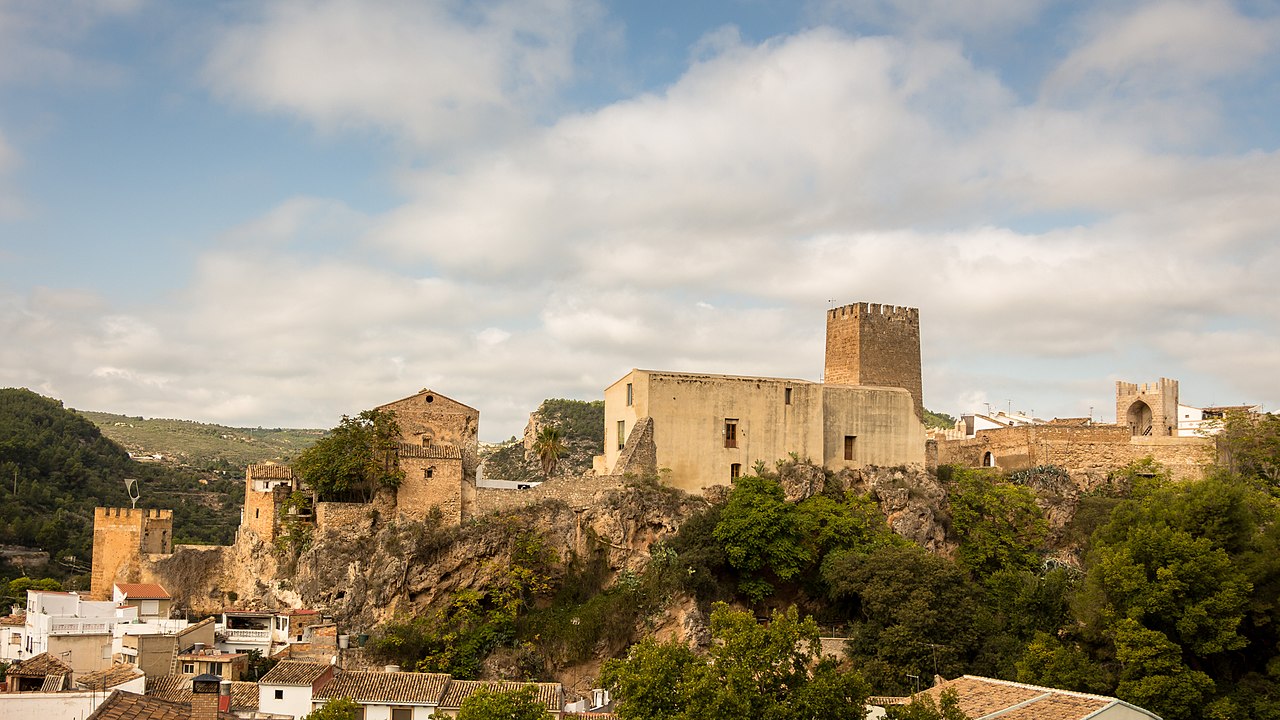
Panoramic view of the castle of Buñol and the church of El Salvador
This beautiful temple should also be on your route for what to see in Buñol. It was built in the XNUMXth century following the canons of the neoclassical, although it has undergone several reforms. It has been listed as Good of Local Relevance by the Valencian Community and has a Latin cross plan with three naves. The plant is organized into four sections that house side chapels open by arches adorned with Corinthian columns. Likewise, the crown is a transept with a dome.
The chapels are also covered by gallon domes and in the central one there is a niche with a polychrome carving of Saint Peter. However, the most meritorious figure is another, in this case San Jose, which is in the right nave and is the work of Ignacio Vergara. On the other hand, in the sacristy there is a marble font dated from the XNUMXth century.
As for the exterior of the temple, the most outstanding element is The cover, although it is not the primitive. It is flanked by two pairs of pilasters, equally Corinthian, on a plinth from which columns start. In addition, the crown is a pediment of classical inspiration.
Hermitage of San Luis Beltrán
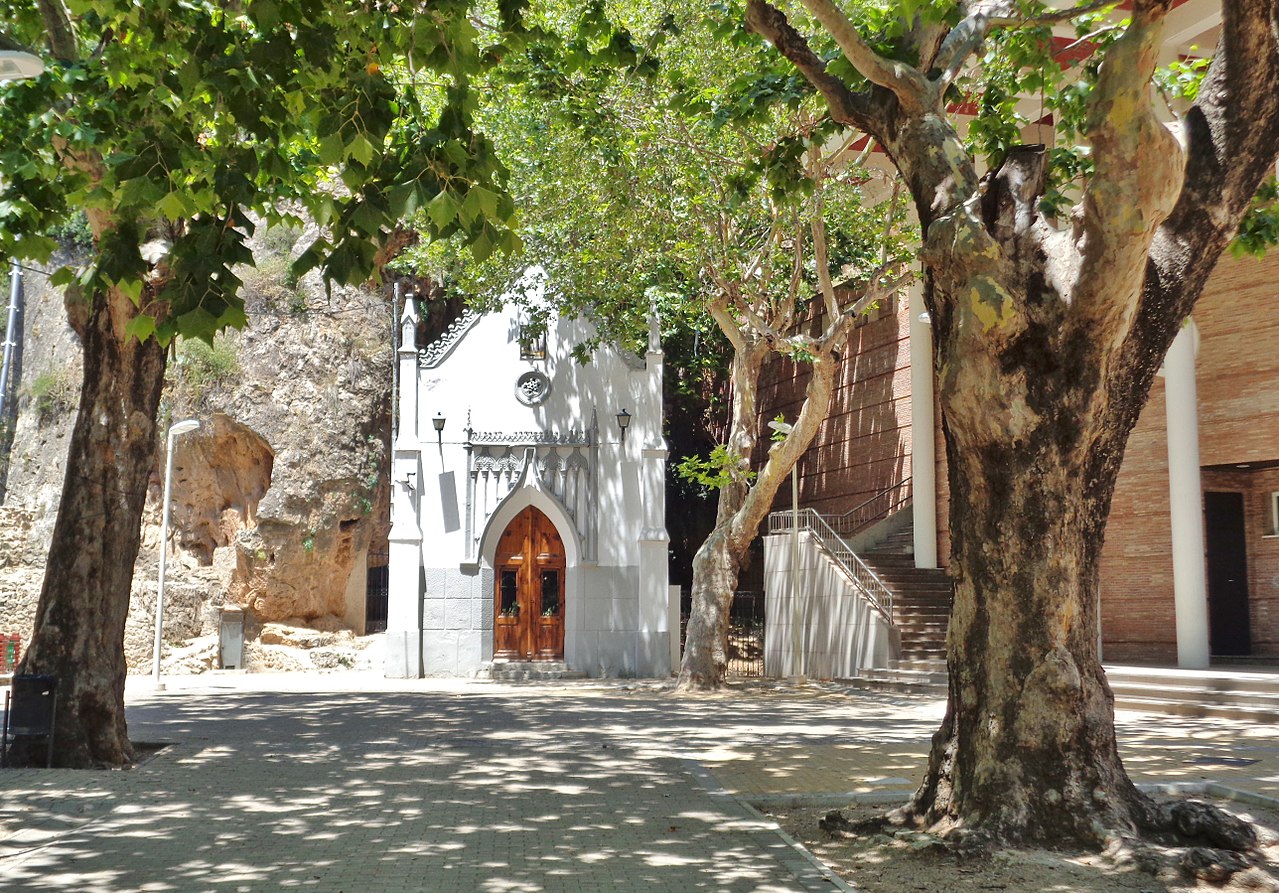
Hermitage of San Luis Beltrán. one of the monuments to see in Buñol
It was built in the XNUMXth century next to the st louis fountain and equally is Good of Local Relevance. Presents neo-gothic features and replaced an older one destroyed by a flood. In this case, it is a small temple with a single nave with a ribbed vault dome. And its altar keeps a small ceramic altarpiece with the image of San Luis Beltran, patron saint of Buñol.
According to legend, in the town he stopped to evangelize and he slept in the vicinity of the site where the chapel is located. For its construction, the rock located behind it was used and it has a gabled roof and a belfry that houses the bell. The door is ogival and has a small rose window on it. Two lanterns and painted plaster figures also make up the façade.
The optical telegraphy tower and sales
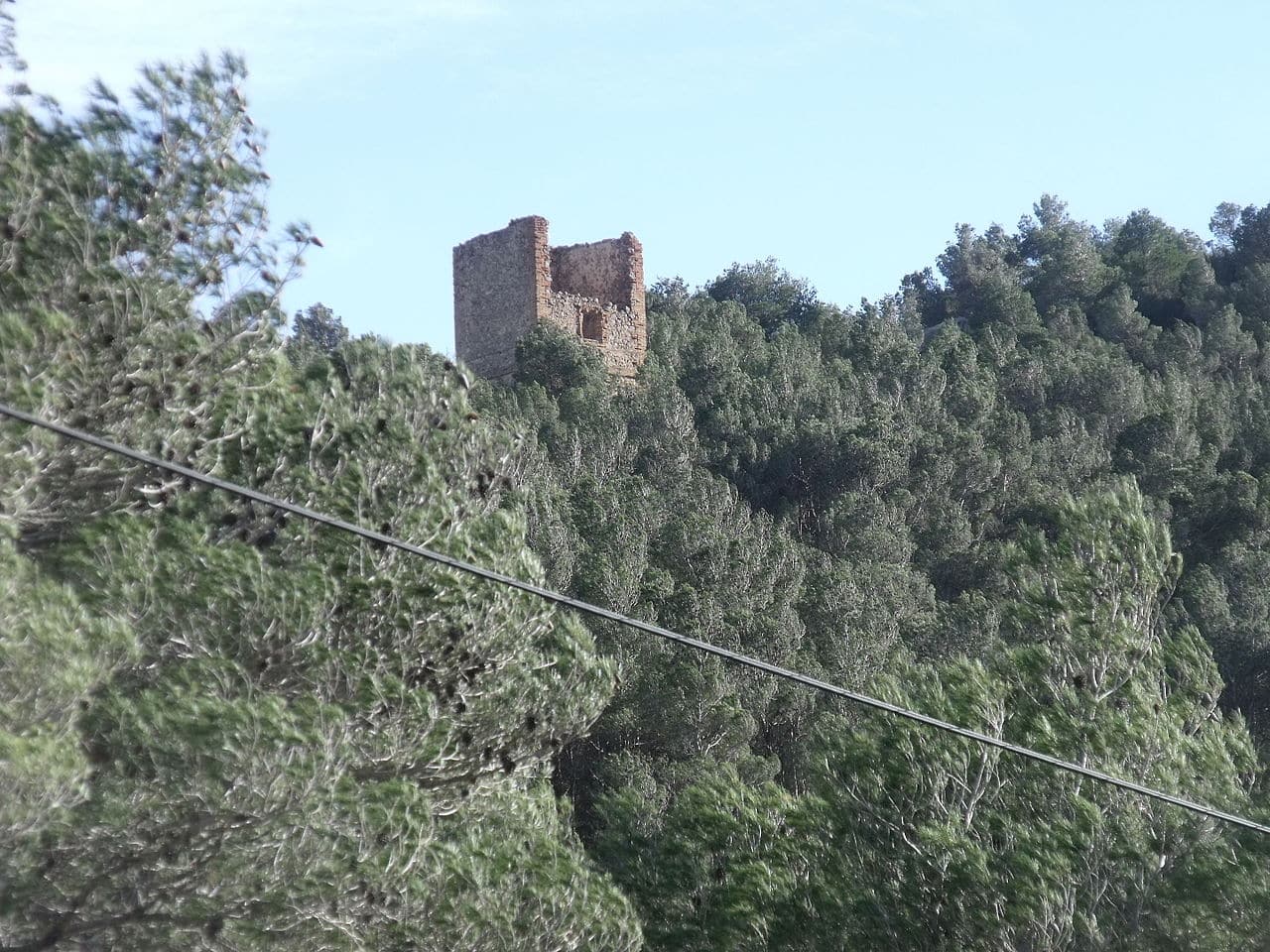
Buñol optical telegraphy tower
On the outskirts of the town, you will find this tower with rifles that is currently in ruins. Specifically, it is in the bunol gate, In full Sierra de la Cabrera. Declared A Cultural, its construction occurred in the mid-nineteenth century to serve as a place of communications.
Optical telegraphy was an XNUMXth century invention to facilitate the transmission of messages. They worked simply. Along a line, several towers were laid in such a way that from each one the previous one could be seen. This transmitted a communication that was observed by the next one and so on.
The one in Buñol belonged to the line from Madrid to Valencia and allowed the message to get from the first tower to the last in just thirty minutes. They all had the same architectural design. They were square and with three floors. Also, its walls were fortified to protect communications.
On the other hand, throughout the municipality of Buñol there are still several sales which, in their time, served as a post stop for stagecoaches. Among them, you can see that of L'Home, dating from the XNUMXth century, as well as those of Ferrer, Pilar, Ajo, Hortelano and Campanero.
The Galán mill and other samples of industrial and civil architecture
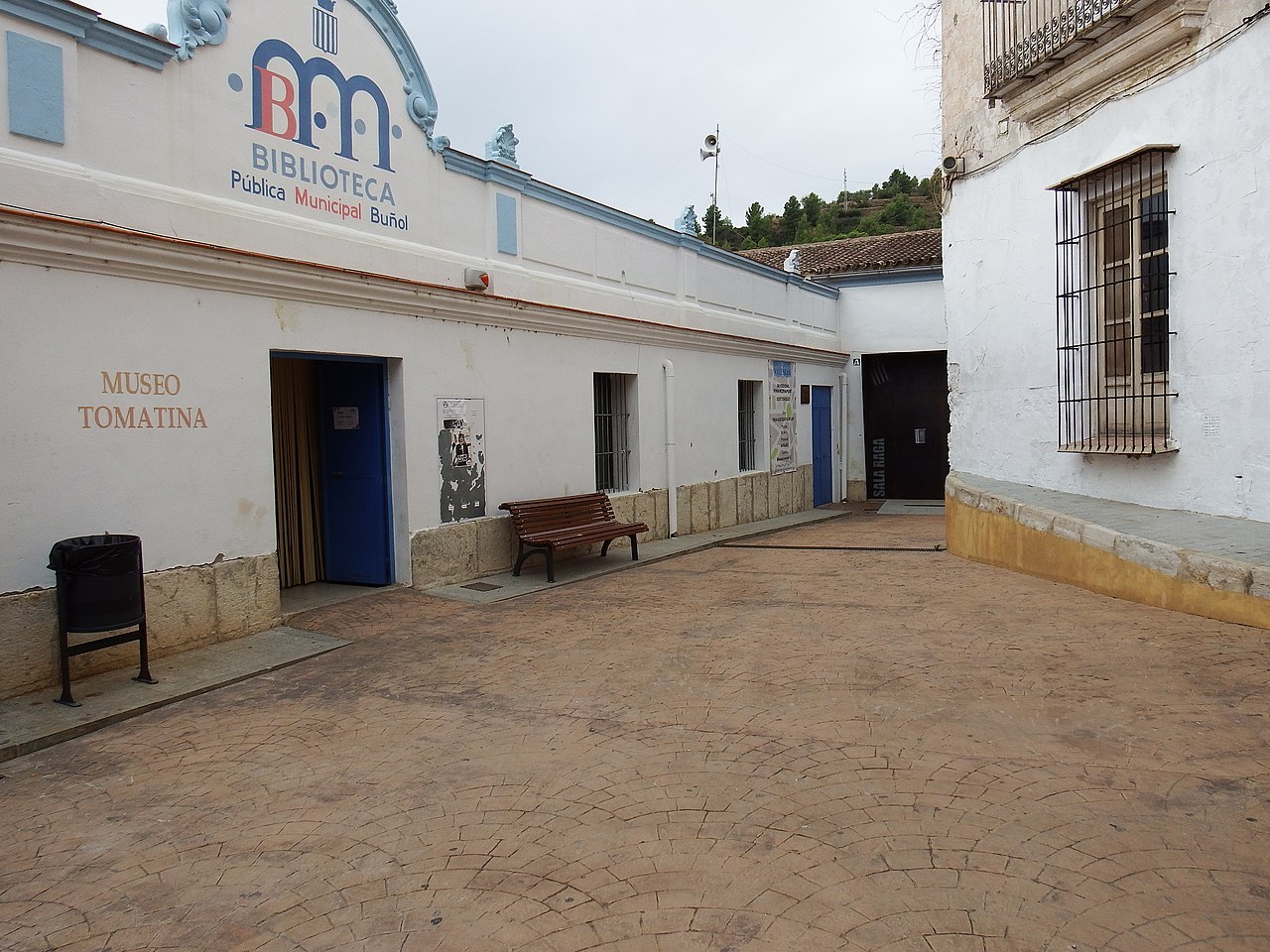
Molino de Galán, which today houses the Tomatina Museum
Among what to see in Buñol, there are also several constructions that respond to the pre-industrial past from the Valencian town. The most famous is the so-called gallant mill, which was built at the beginning of the XNUMXth century as a paper mill. Its architectural characteristics go unnoticed because it tried to emulate the houses of the town.
It has been rehabilitated and now serves as a space for different activities. It has library, exhibition and conference rooms and sports facilities. But the most unique thing about her is the Tomatina Museum, a festival that we will talk about later.
On the other hand, in Buñol there are several buildings of great beauty that respond to the modern architecture. This is the case of the chalet that houses the San Rafael Conservatory of Music, a beautiful construction of classical inspiration. We will tell you that Buñol has a great musical tradition. At the end of the XNUMXth century there were already two groups of this type in the town: the Musical Society The Artistic and La Armónica Musical Instructional Center.
After many vicissitudes, the town today has two heir bands of those. As an anecdote, we will tell you that the members of La Armónica are known as "the liters". It's because they used to share a liter of wine after rehearsing. For their part, those of La Artística are called "ugly" because its great promoter was Francisco Garcia "the Ugly". It is no coincidence that in 1989 the town inaugurated a modern auditorium of music. For its construction, the cut of a hill was used and this provides it with magnificent acoustics. It has capacity for two thousand five hundred people.
La Tomatina, essential among what to see in Buñol
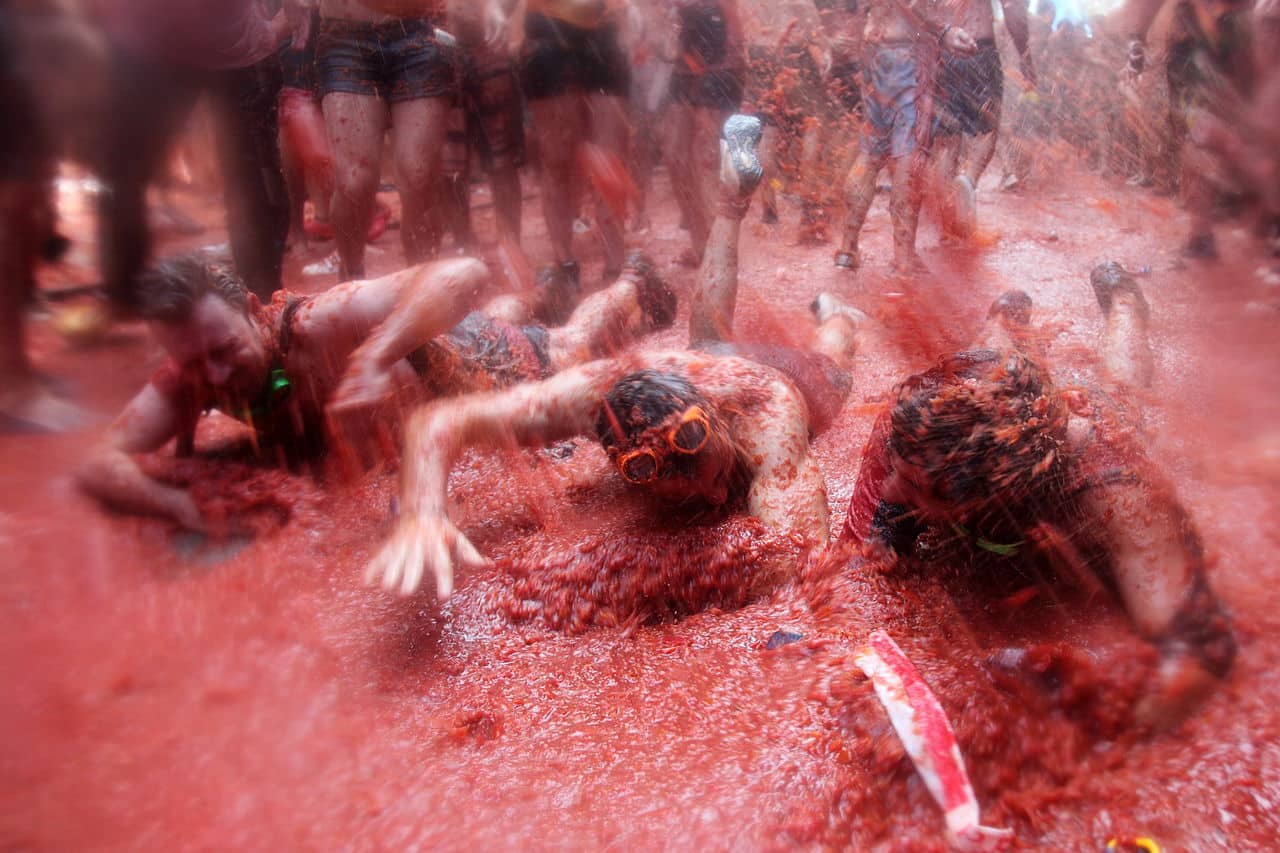
An edition of the Tomatina
We end our tour of the Valencian town by talking to you about his most important party. We refer to the famous Tomatina, whose popularity has crossed the borders of Spain. So much so that it receives visitors from all over the world. But, in addition, it has appeared in hollywood movies and even from his Indian counterpart, Bollywood. and have been created party replicas in cities as far away as The brand in Argentina, Boryeong in South Korea or Quillon in Chile.
La Tomatina is celebrated on last wednesday of august within the local festivities. As you know, it consists of the participants throwing ripe tomatoes at each other. There are several theories about its origin. But the most accepted dates back to 1945. The festival of giants and big heads was celebrated and a group of young people wanted to join the procession, but they were not allowed.
Then, an argument began between both sides that ended in a fight. As it happened, he happened to have a vegetable stall nearby. Since those facing each other had nothing else to hand, they started throwing tomatoes at each other until the police arrived to break them up. However, things did not end there.
The following year, both factions met again, but this time, they already brought the tomatoes from their homes. The authorities, alarmed, decided to ban the fledgling party. And this was enough so that, each time, it took more strength. Finally, the rulers had to give in and, already in 1975, the society of The Clavarios of San Luis Beltrán they took the lead the organization of the festivities. They suffered a knock in 2013, when La Tomatina appeared on the television program Weekly report. This multiplied the attendees and led to the declaration International party of touristic interest.
In conclusion, we have shown you what to see in Bunol and also how to enjoy its famous Tomatina. But, since you travel to the province of Valenciayou should also know Bocairent, Gandia and other beautiful towns that are found throughout their lands. All this, without forgetting, of course, the capital itself, with wonders like his Gothic cathedral, the Torres de Serranos and Quart or the Oceanográfico. Dare to discover everything that this Levantine province offers you.